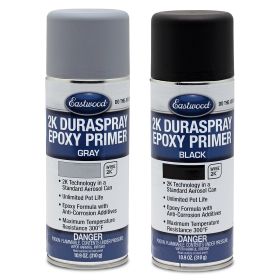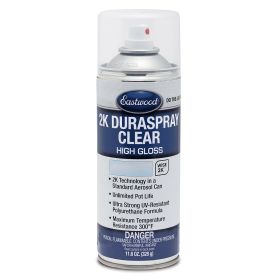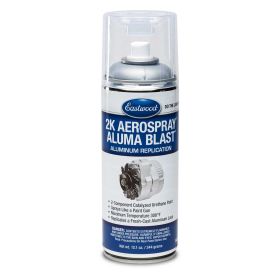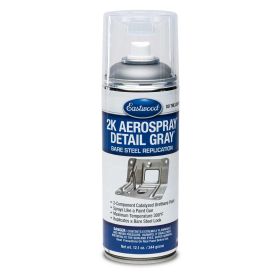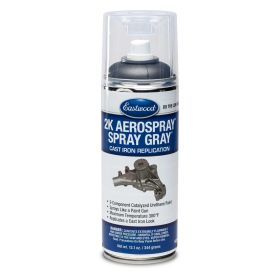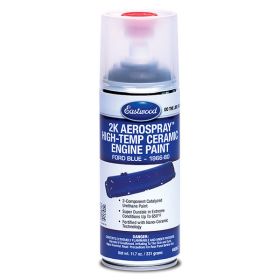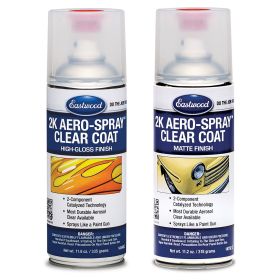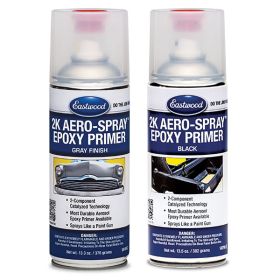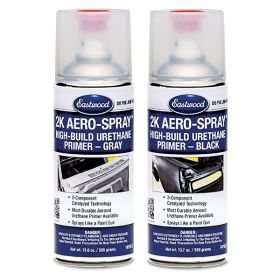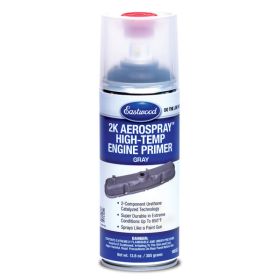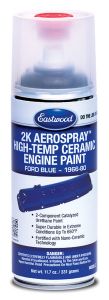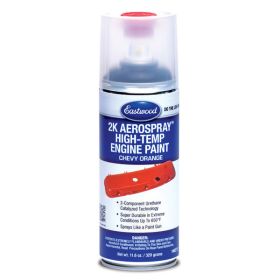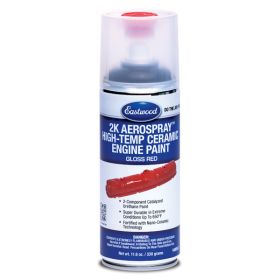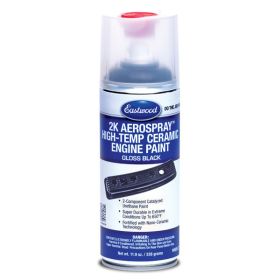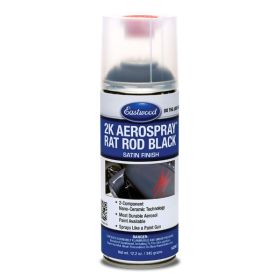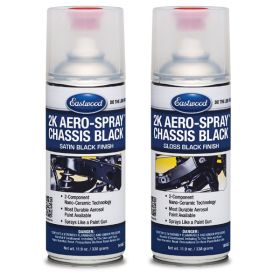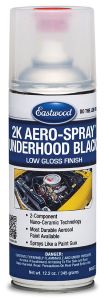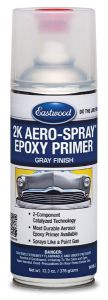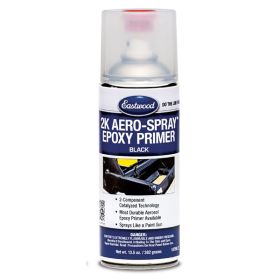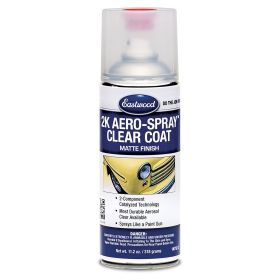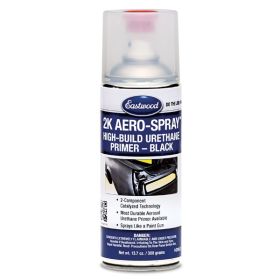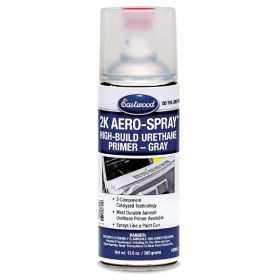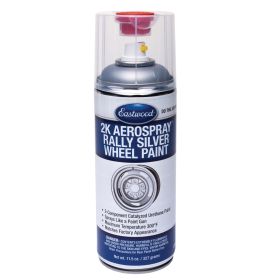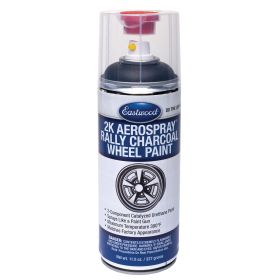
Eastwood AeroSpray 2K Spray Paint
Pro Paint Gun in an Aerosol Can!
Enjoy the convenience of a spray can with great results by finishing your car using this specially-formulated aerosol car paint. Eastwood's New 2-Component Ceramic AeroSpray™ Paint has the durability and precision of a 2-component coating without the paint gun! The two-chamber design mixes the ceramic fortified coating and activator right in the can — no paint gun required and no mess to clean up.
Premium automotive spray paint has long been sought by DIYers who don't have the money, patience or storage space for an HVLP gun and all its accessories. Innovative nozzle technology sprays with a wide spray pattern, giving you excellent coverage and more control than conventional aerosols. It's formulated with Eastwood's proprietary Nano Ceramic Technology to provide you a long-lasting, beautiful and durable coating. Watch our video to learn more about how 2K AeroSpray paint works.
Simple DIY Painting Solutions
Thanks to Eastwood, the answer to the question ""can you spray paint a car?"" is now an enthusiastic ""yes!"" We offer a variety of ceramic aerosol paint options, including Rat Rod satin black, detail gray and Aluma Blast. High-temperature engine spray paint offers lasting protection in OEM-style hues such as Chevy Orange and Ford Blue. Chassis Black Eastwood spray paint is great for wheel wells and suspension parts. By using AeroSpray primer and clear coats, you can complete every stage of a restoration paint job without touching a paint gun or brush.
Our guide below has all the basics about how to paint a car with spray cans. You can also visit the Eastwood Garage or call the tech team for expert advice. We offer a 100% customer satisfaction guarantee with 90-day returns on this revolutionary auto body spray paint.
How to Spray Paint a Car
What do I need to spray paint my car?
Automotive spray paint has erroneously developed a bad reputation over the years. Yet, innovative application methods, with 2K aerosol paint, have improved the result and allow the do-it-yourselfer to touch up their car, especially when you spot a scratch or a small patch of rust.
However, you won't just spray the color on the vehicle and call it a day. Especially with 2K Auto Spray Paint, you'll want to treat this like any other paint job, starting by sanding down the surface. To do this, you'll need:
- Wet-and-dry sandpaper, ideally with 1200- and 2000-grit options available.
- A power sander — unless you plan to sand by hand.
- Masking tape and paper
- Paint thinner
- Primer
- Topcoat
- Lacquer or clear coat
- Buffer
- Safety gear, including safety glasses and a face mask
As well, you want to make sure your automotive spray paint provides an exact match upfront. To do this, look for the vehicle's factory paint code, usually printed on the compliance plate or on the VIN tag under the hood. Paint code databases online further let you find a match by year, make and model.
As another point before getting started, realize that even with automotive spray paint, dust and debris can mar the outcome. Be sure to wash your car off first and have cleaning cloths for wiping down the surface before application.
Prior to beginning the project, feel how the 2K AeroSpray can handles and practice spraying on a metal surface. See how the 2K AeroSpray works before applying it at home.
As you start the project:
- Wash off your car, using soap or a degreaser depending upon the accumulation.
- If you'll be painting over an area with scratches, small dents or chips, you'll first want to fill in the depression with putty.
- At this stage, you'll want to sand down the existing paint job. Keep in mind that you don't need to go all the way down to the metal. Go in a circular motion to get as even of a surface as you can for the paint to bond.
- Don't apply automotive spray paint to a just-sanded surface. At this stage, use a thinner and a rag to remove any debris and dust.
- To avoid having the auto spray paint travel onto the existing paint job, mask these areas off with the tape and paper.
- To prep your vehicle, first mix the primer and thinner together. Realize you don't want to use a single coating, and instead expect to apply two or three evenly over the surface. Allow time for each coat to dry.
- Before applying the auto spray paint, re-sand the surface, so that its application will be smooth and even. Here's where the 2000-grit sandpaper comes in handy. Be sure to wipe the area down after.
- At this stage, apply the automotive spray paint, ideally side to side rather than in a circular motion. As with other auto paint, layer on multiple thin coatings to avoid adhesion and texture issues. Be sure each coat dries fully before the next application.
- As the final step, you'll apply the lacquer. Expect to put one or two thin coats on.
- After everything dries, go over the recently painted area with a buffer to even out the appearance.
- Learn more about auto spray paint application.
Can you paint over existing auto paint?
This factor depends on the surface you'll be painting. All auto paint jobs require some sanding and priming, although, as mentioned above, you don't need to go all the way down to the metal.
With newer coats requiring a touchup, this is a possibility, and your work will be building off the existing strength of the paint, primer, and sealer, including the factory's durable undercoating.
However, if the existing paint shows signs of cracking, bubbling or peeling, a new paint job won't correct the issue, until that area is sanded down completely with coarse sandpaper and repainted with a base and clear coat. Find out more about applying automotive spray paint.
What is the hardest car color to paint? Which is the easiest?
Colors with minimal variation, like black and white, provide the greatest degree of blend-ability and are the easiest to match.
Each, though, has its own advantages and drawbacks. Black may match the existing paint job with ease, but the color highlights textural issues. Whites can camouflage dents and other visual imperfections, but you need to select the exact shade. Colors with a metallic or pearly sheen or off-white hue will stick out against the rest of the body color.
Added to this last note, DIY enthusiasts run into challenges with any type of metallic finish, as the quality and sheen are rarely an exact match. Solid shades without any type of coating, by contrast, tend to offer more straightforward matching.
Resources:
- Get the most out of spray paints.
- Auto painting tips and tricks.
- Spray painting troubleshooting.
- Tips when powder coating parts white.
- 1974 Datsun painted with 2K AeroSpray paint.
- 1K vs 2K coatings.
- Is 2K AeroSpray the same paint that is sprayed from a paint gun?
- How to properly select a paint color.
- Reasons paint doesn't match.
- How 2K AeroSpray works.





